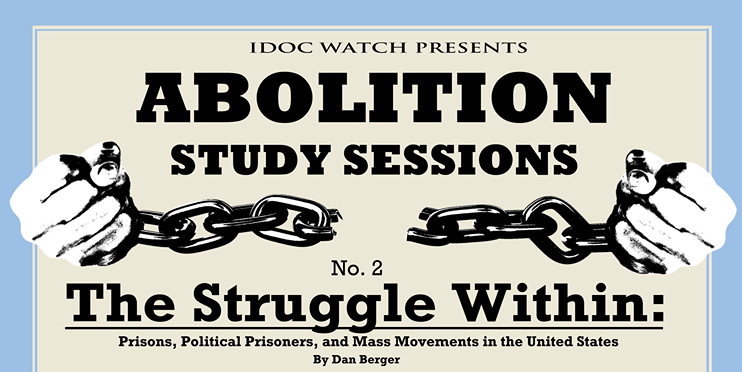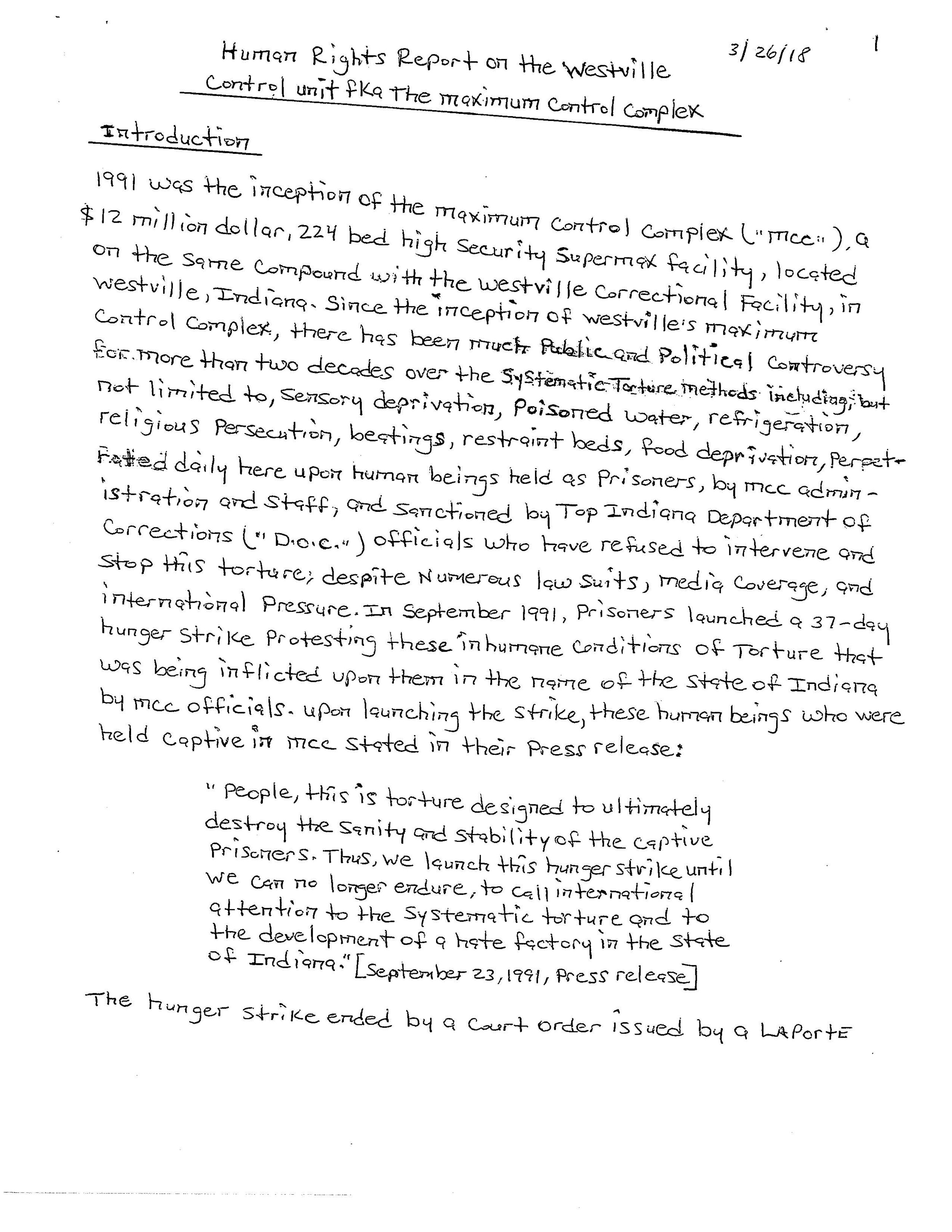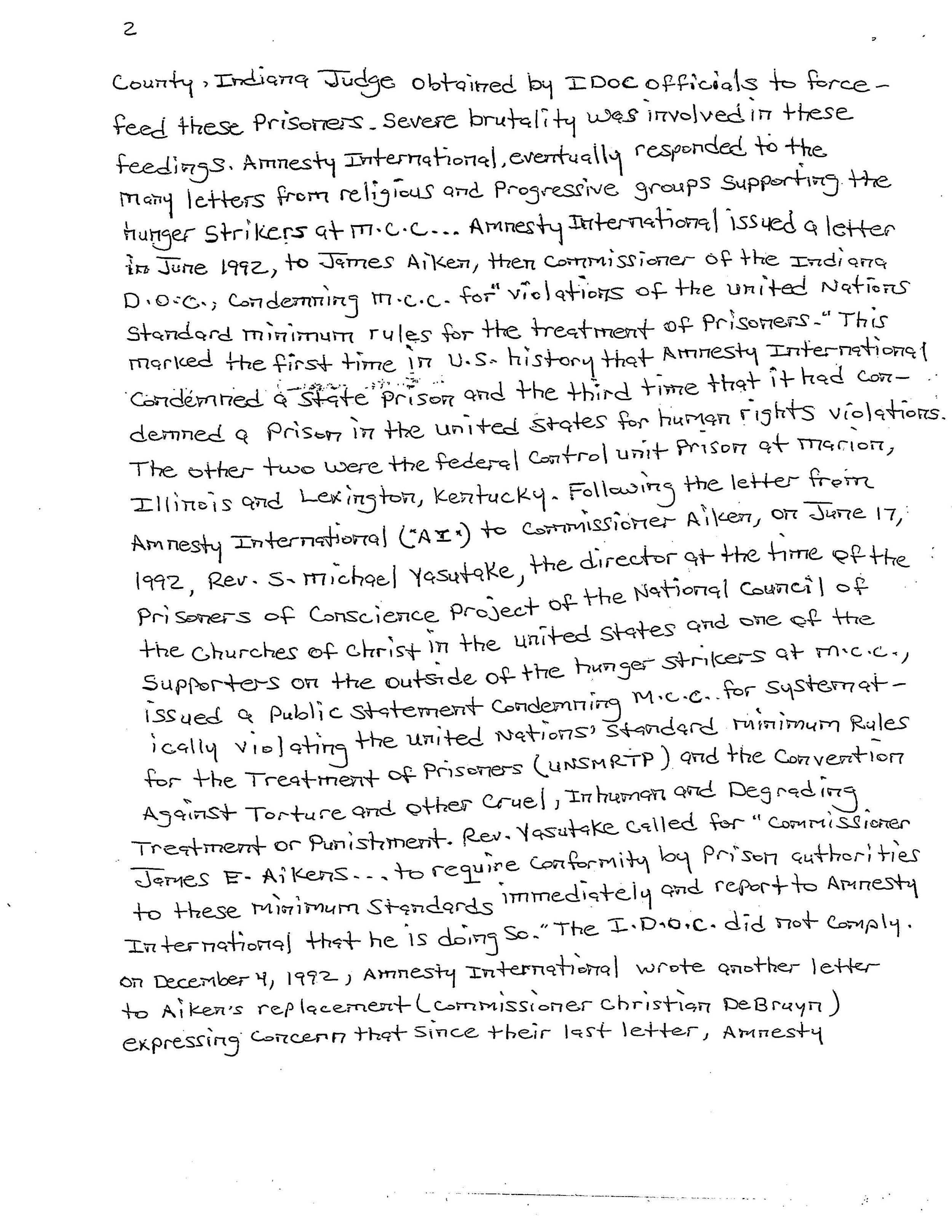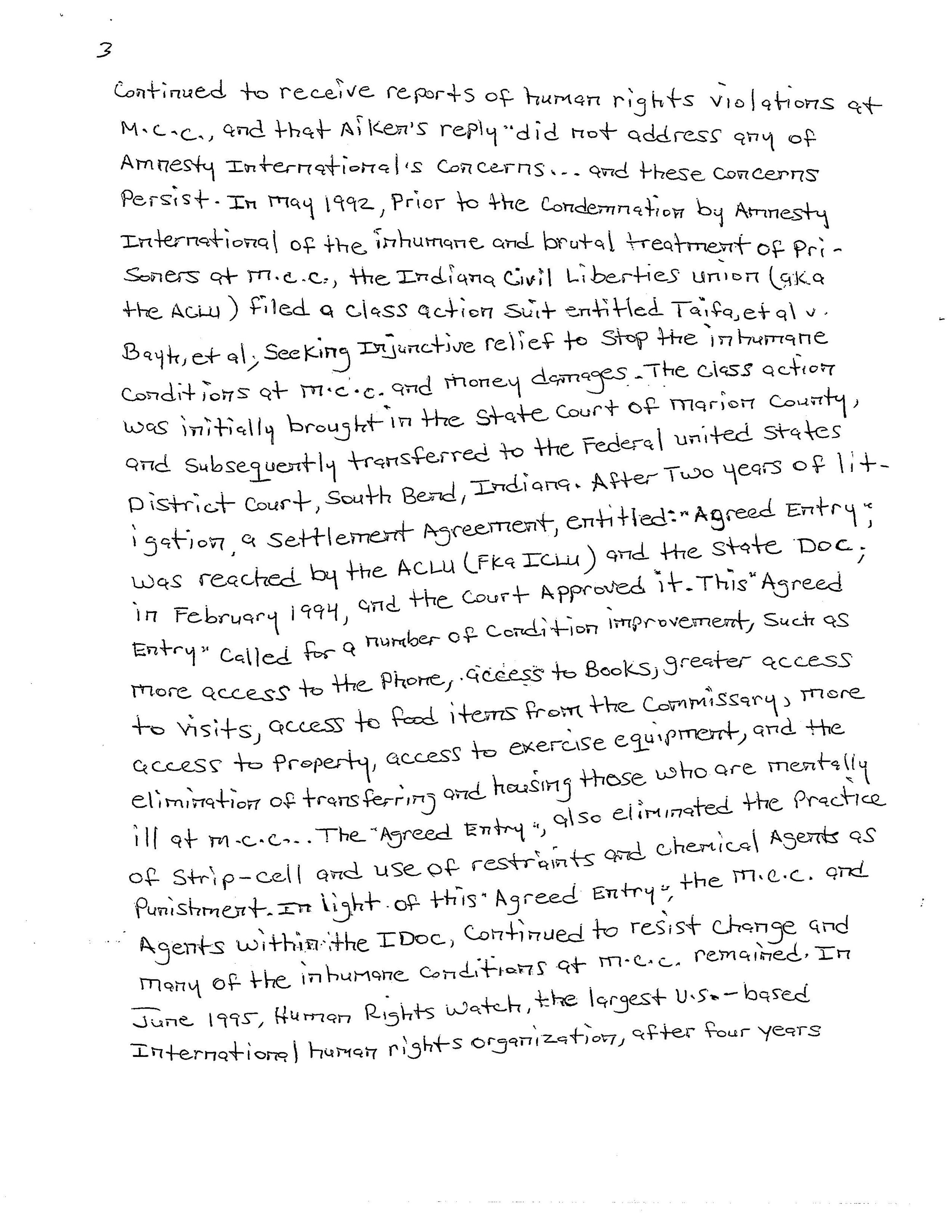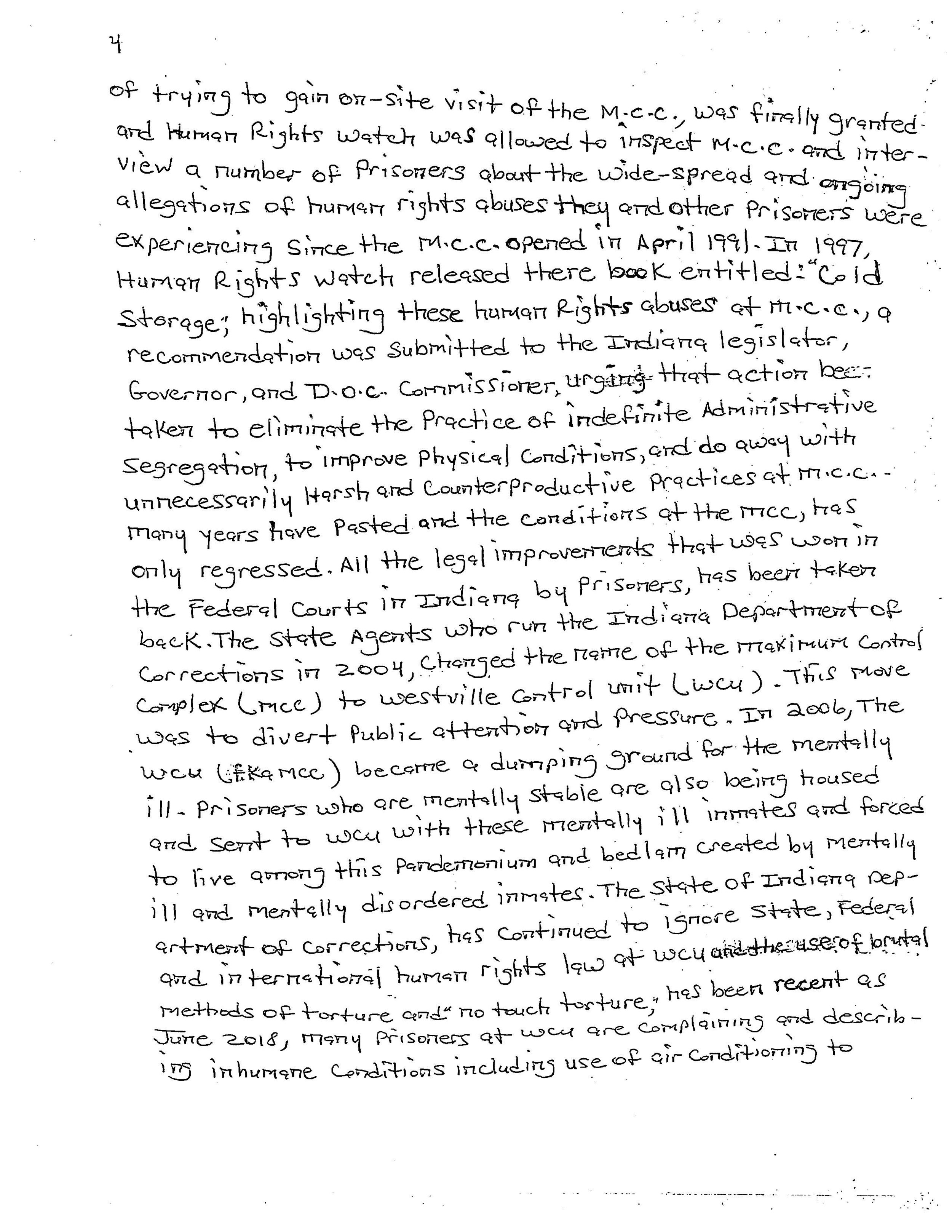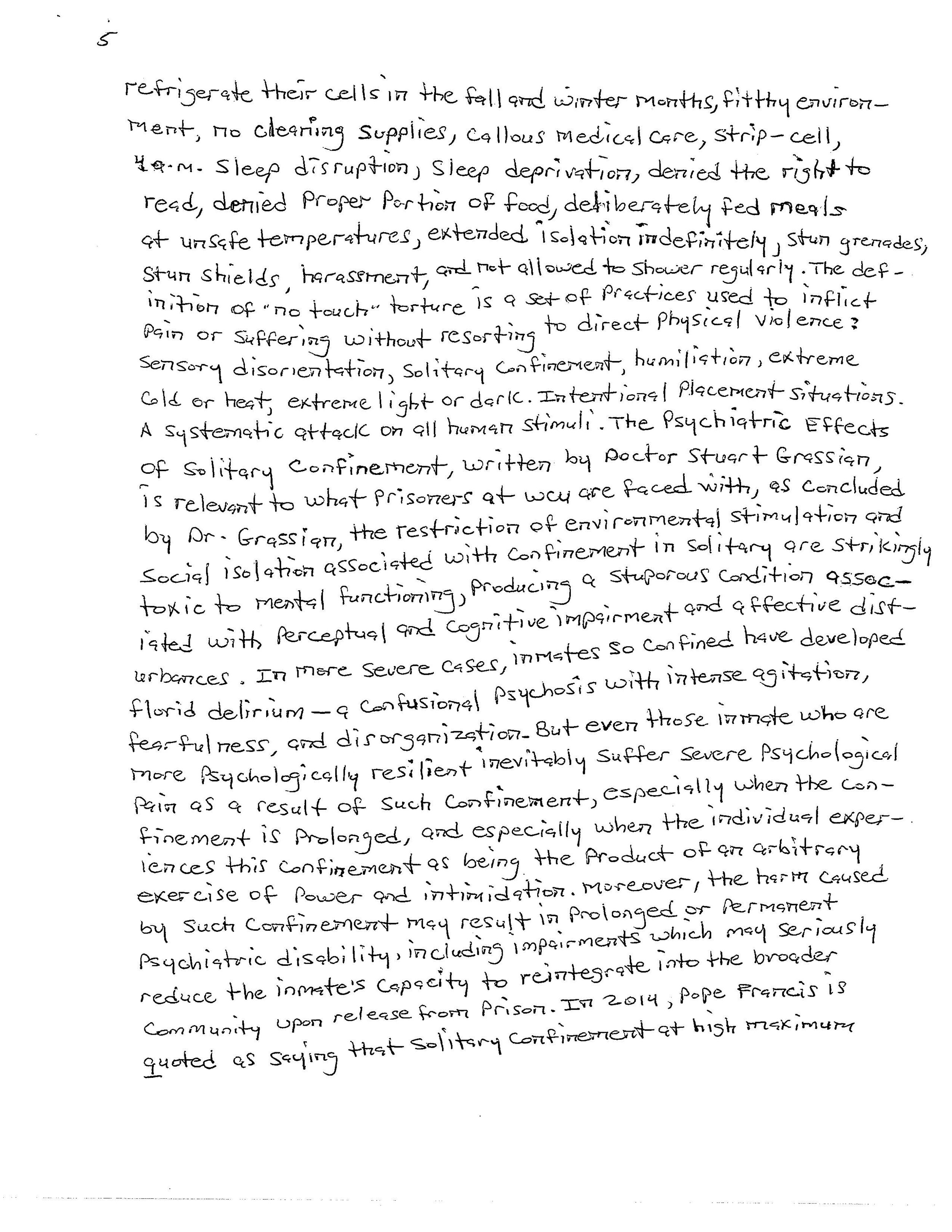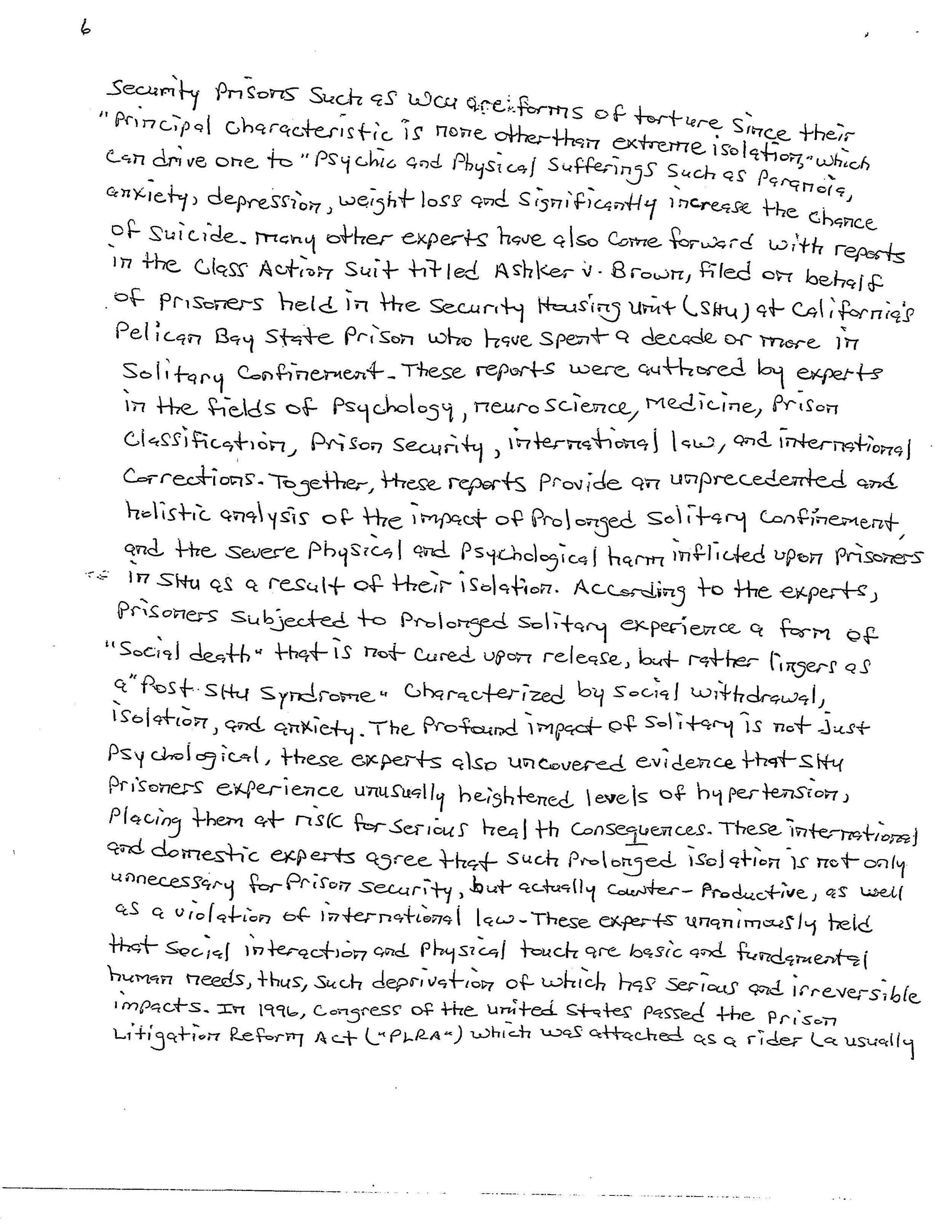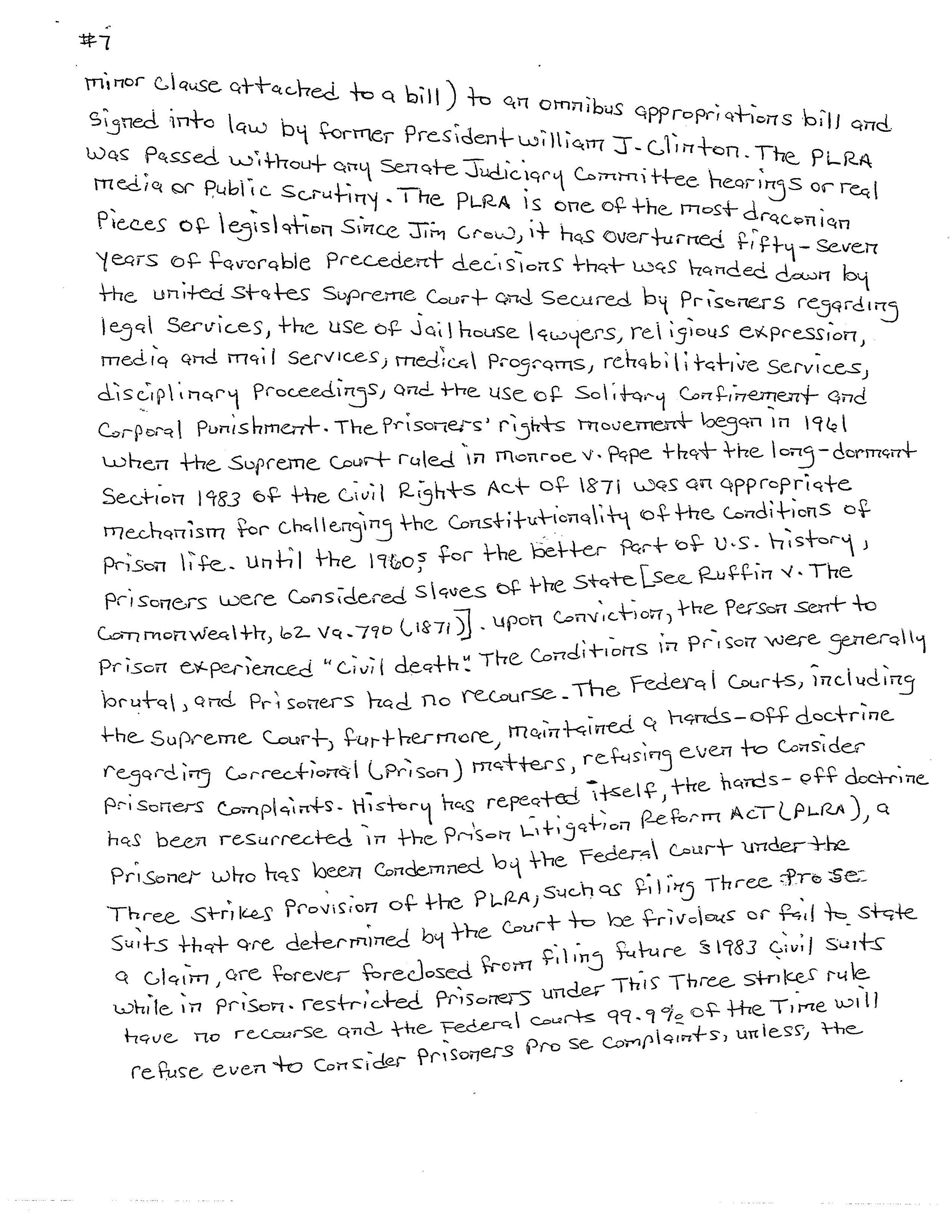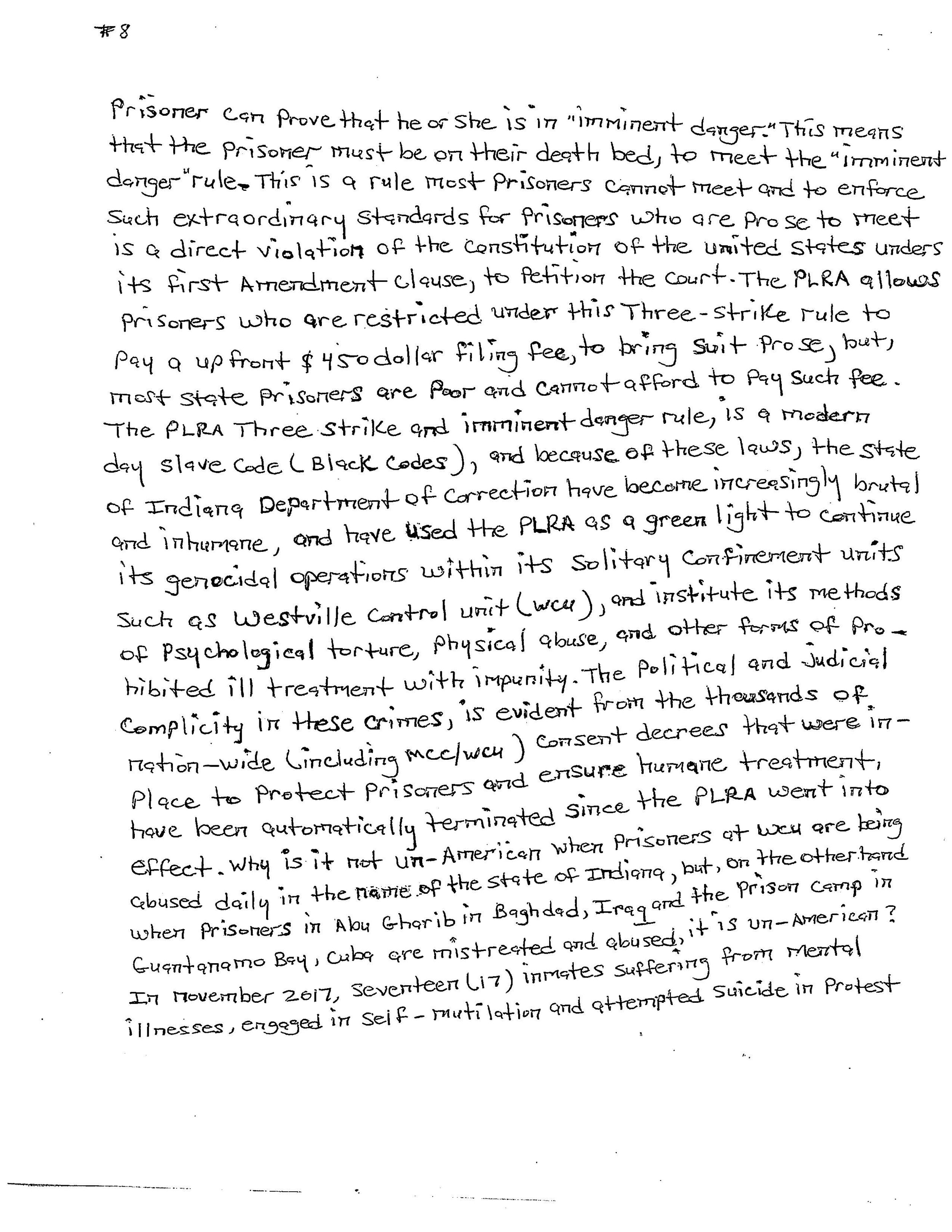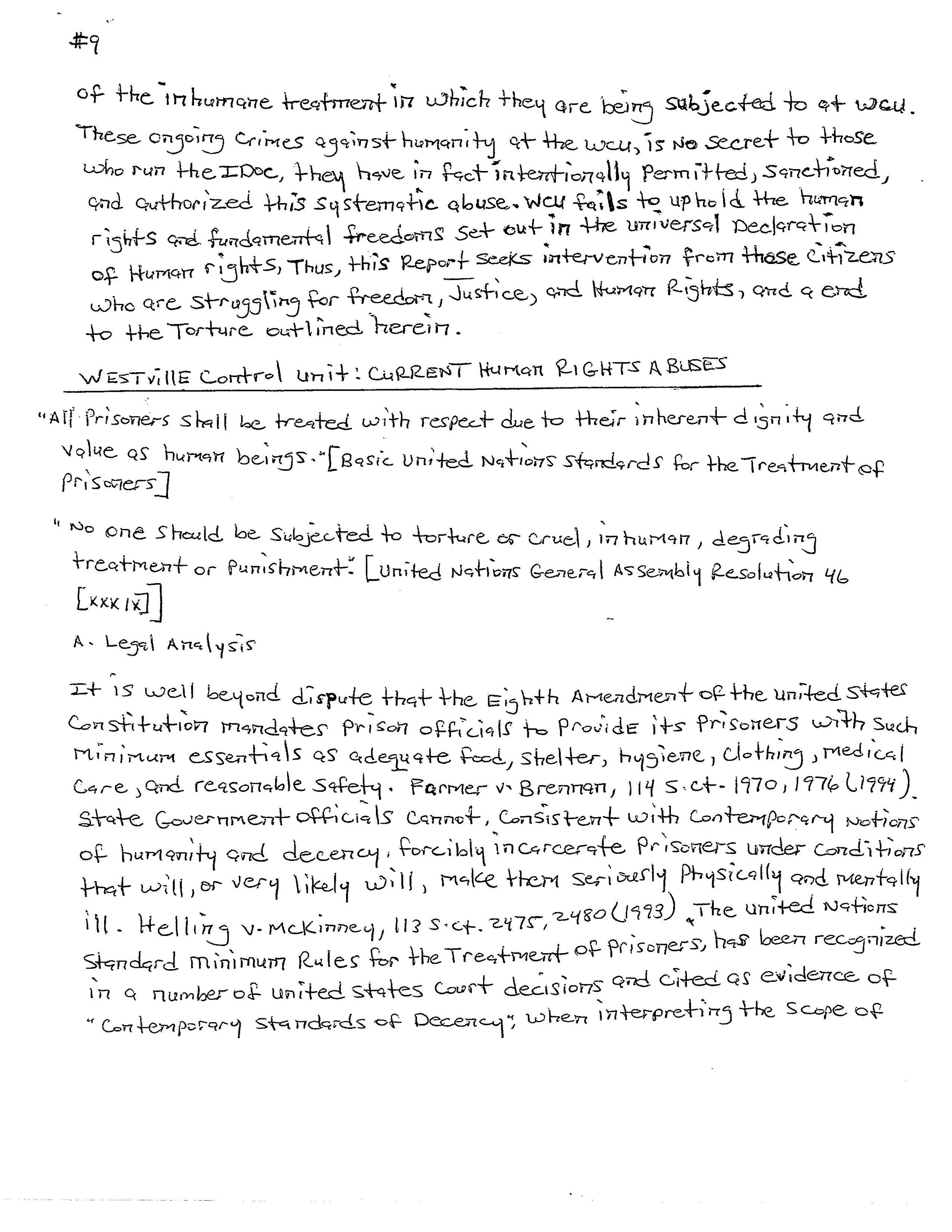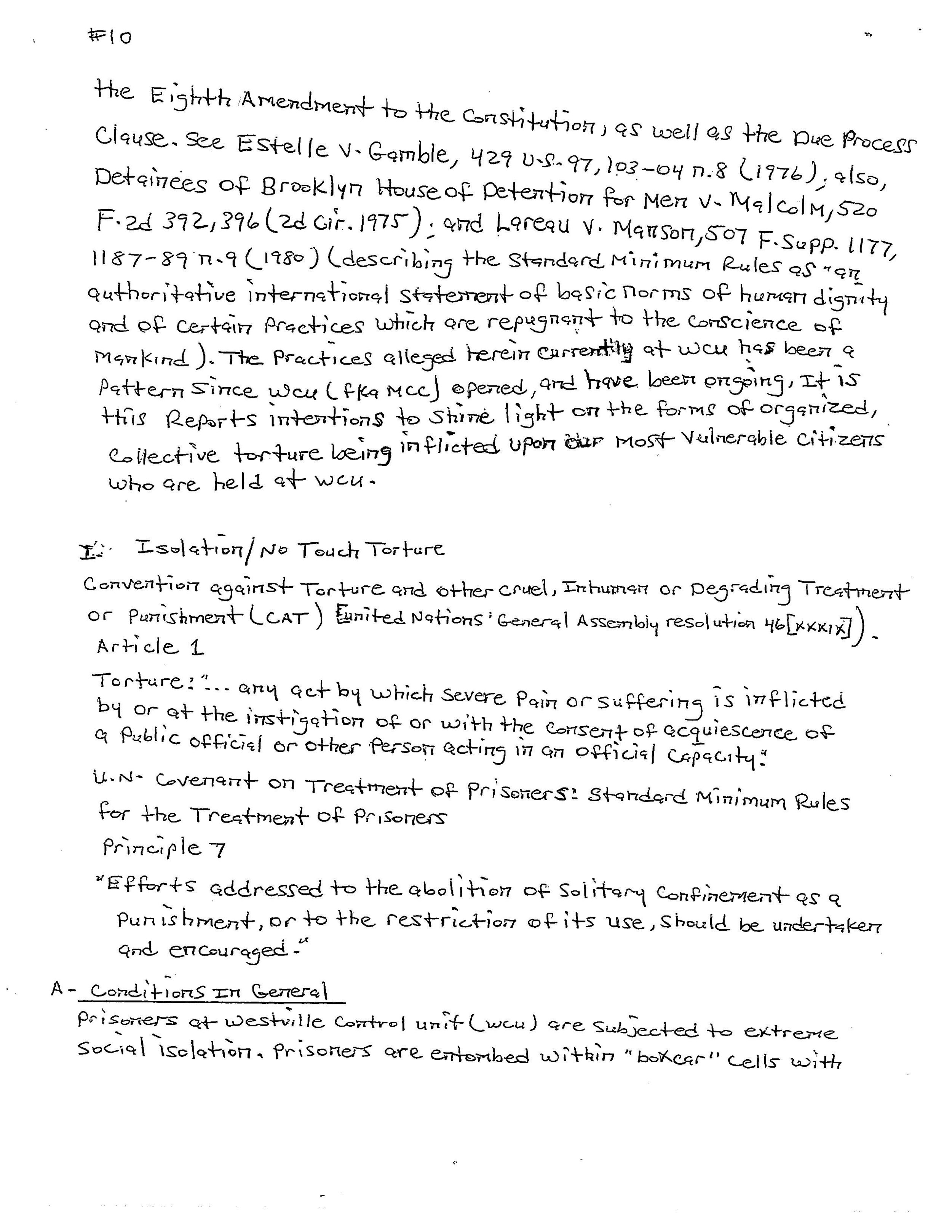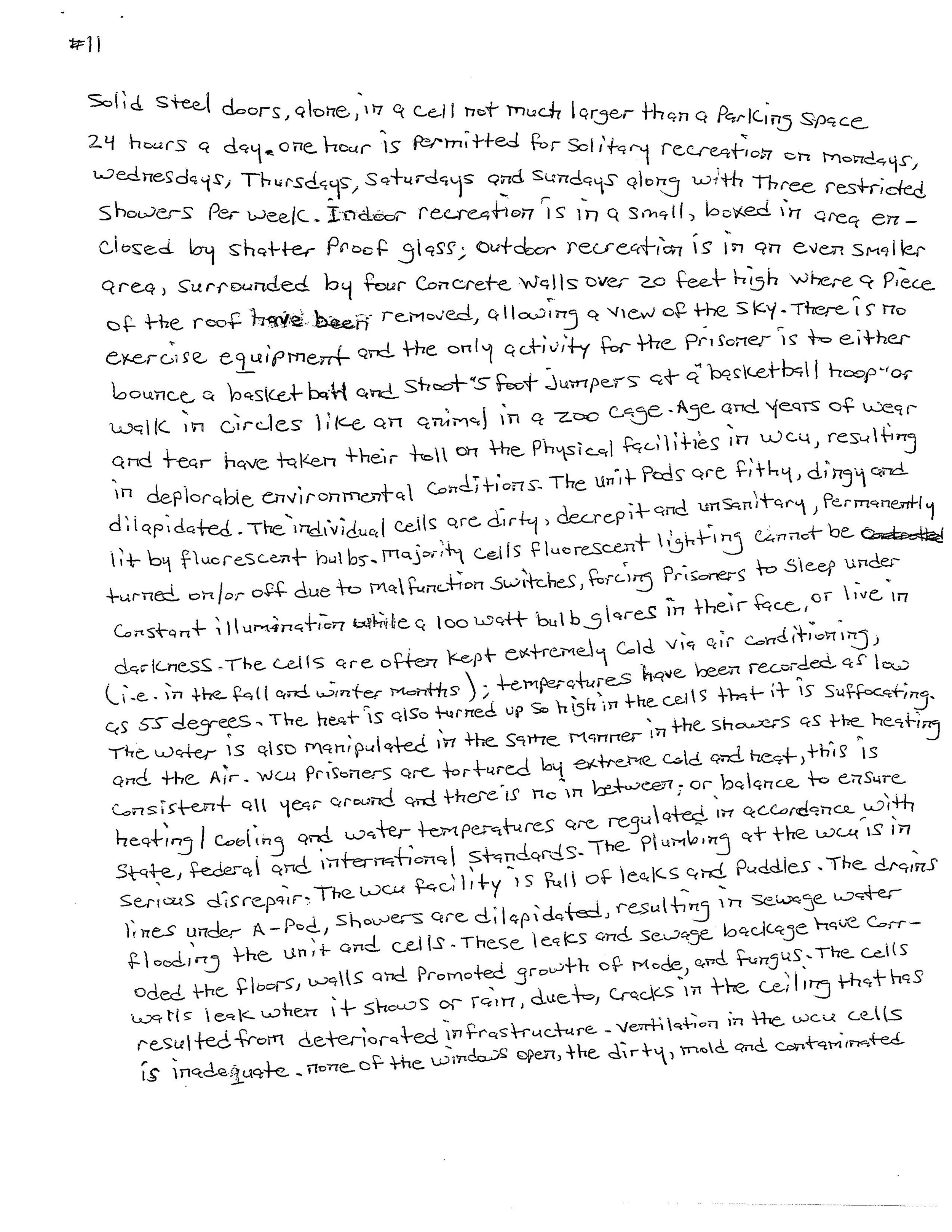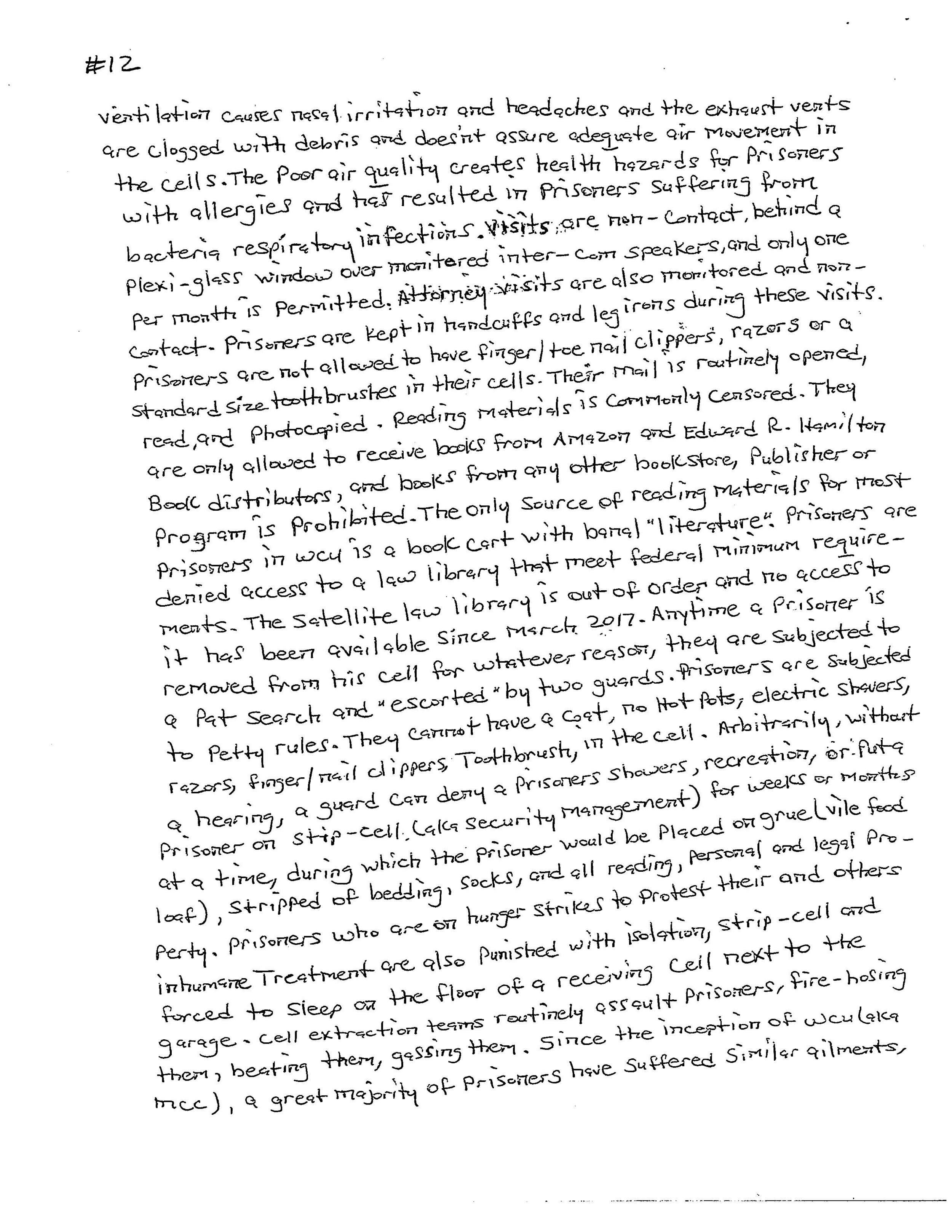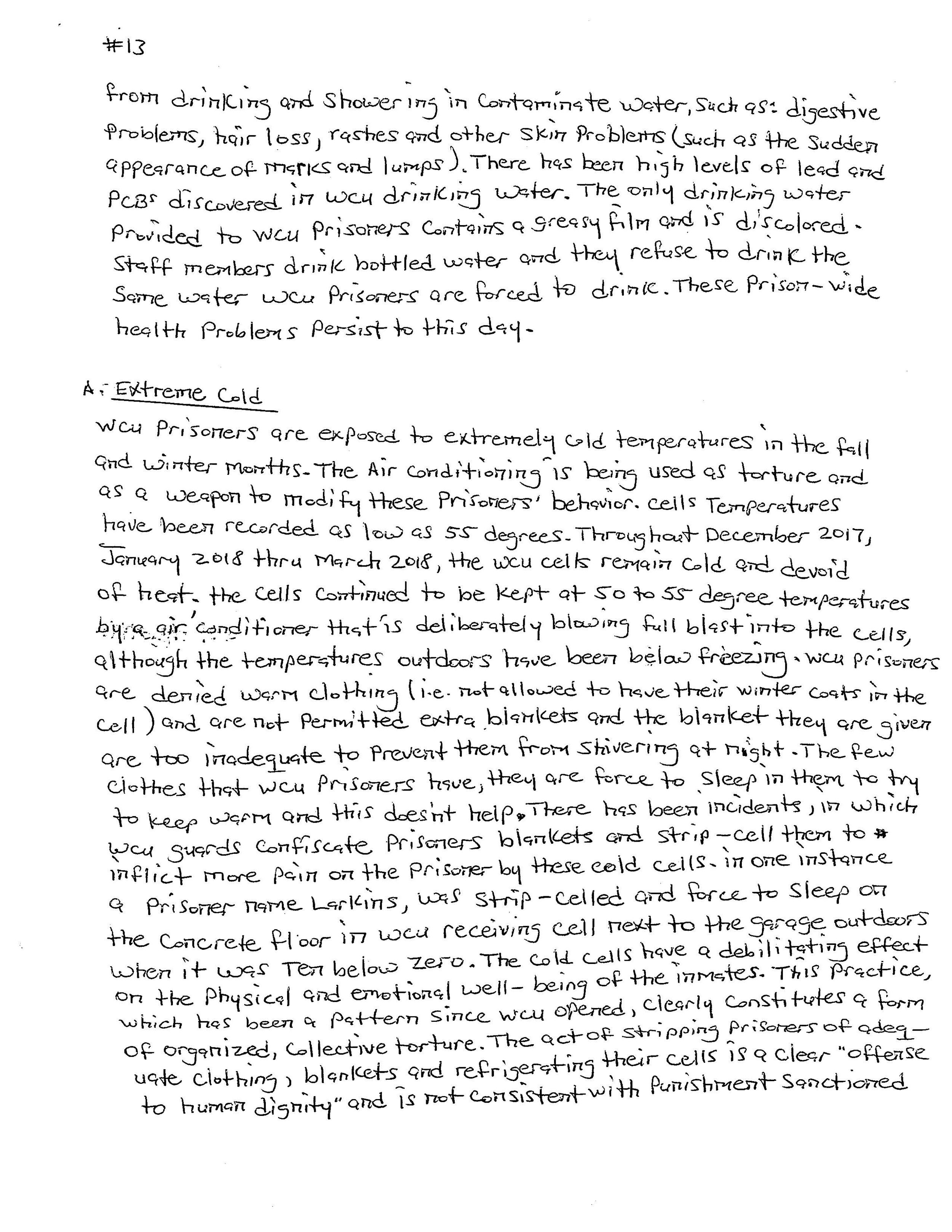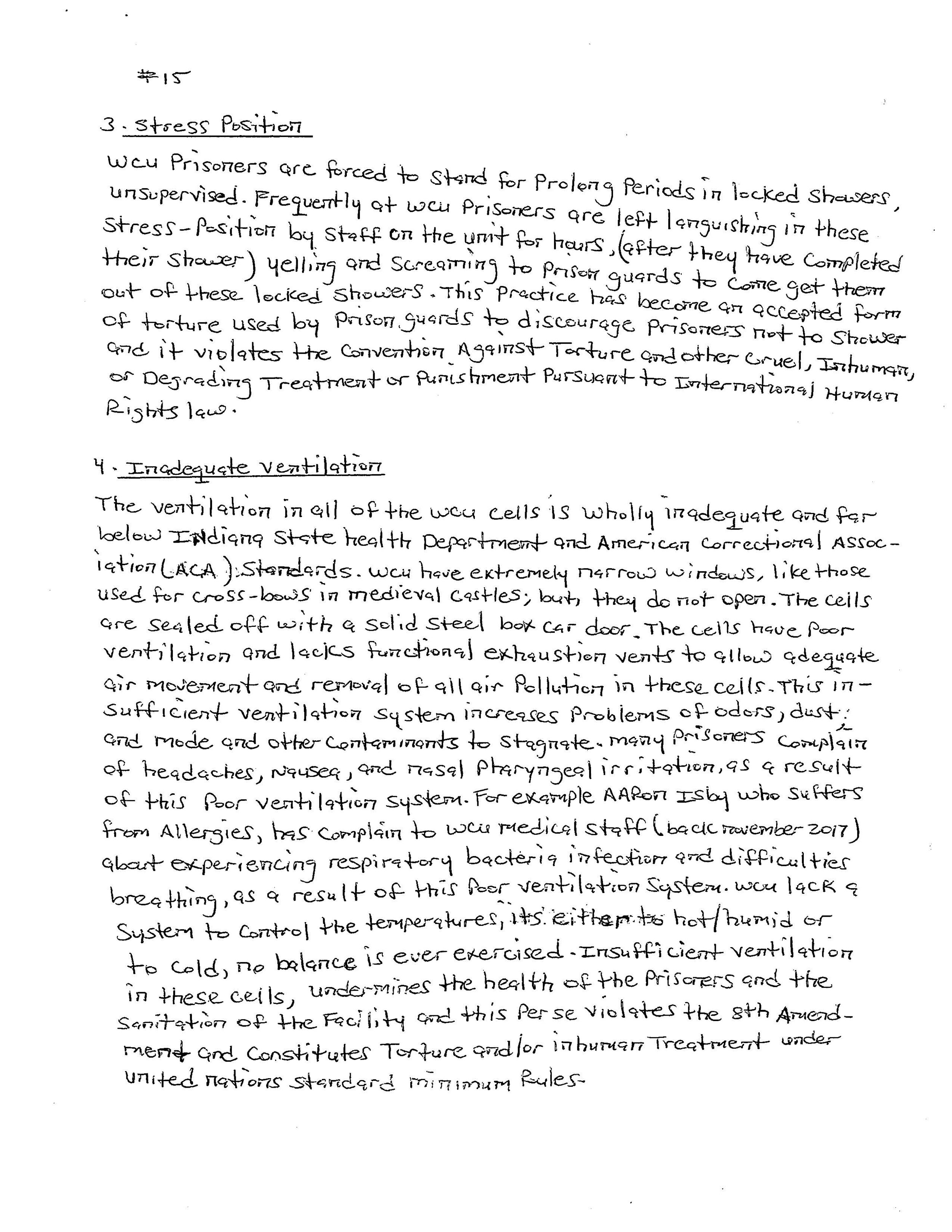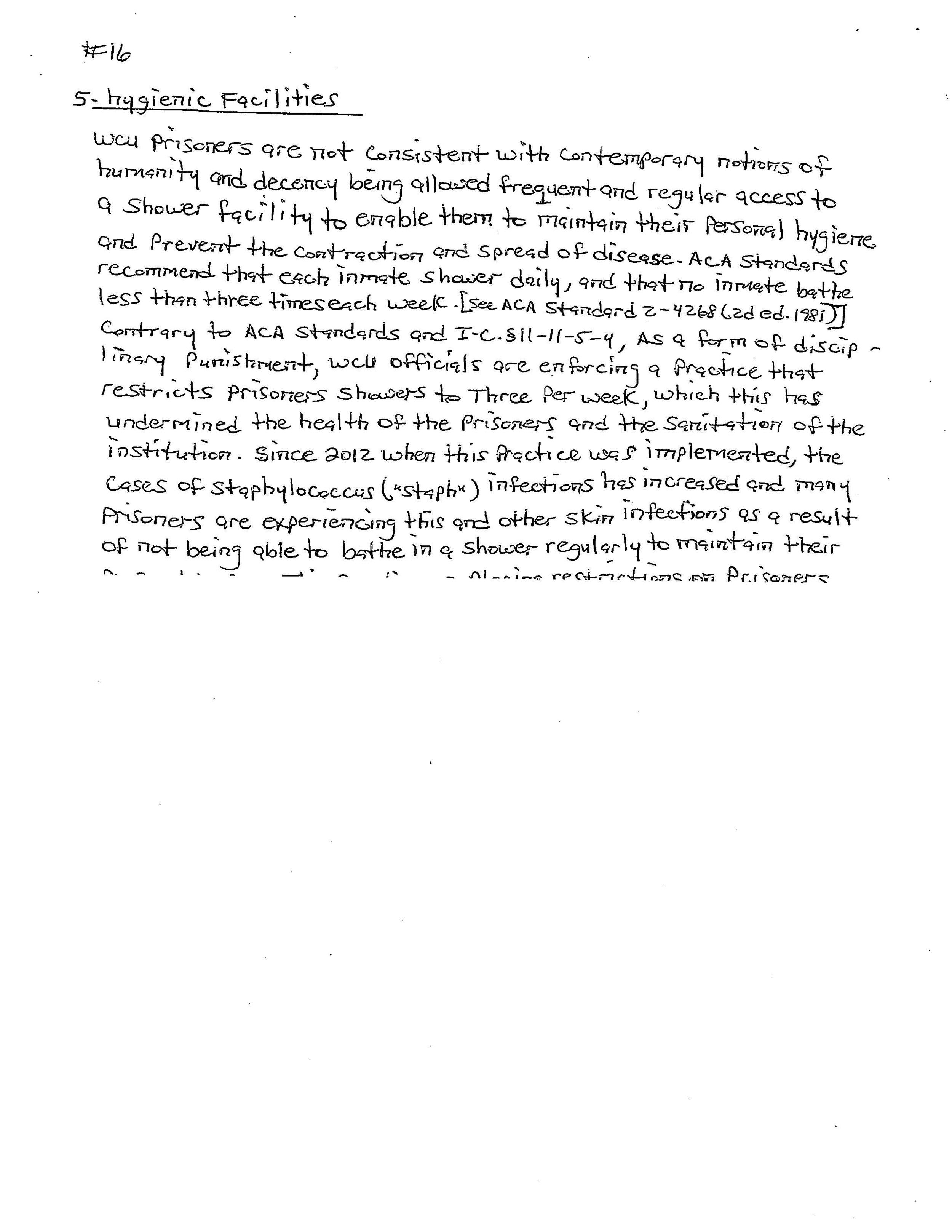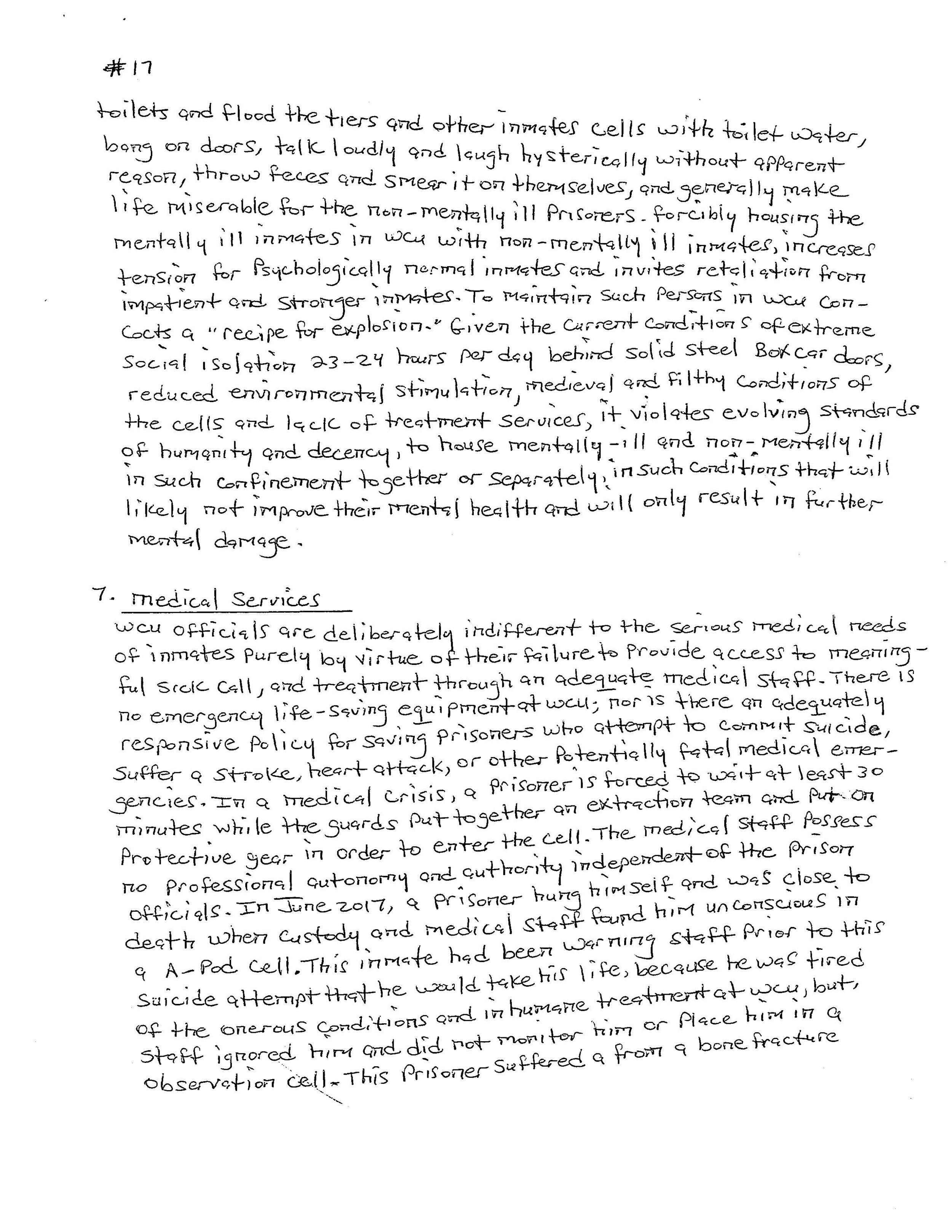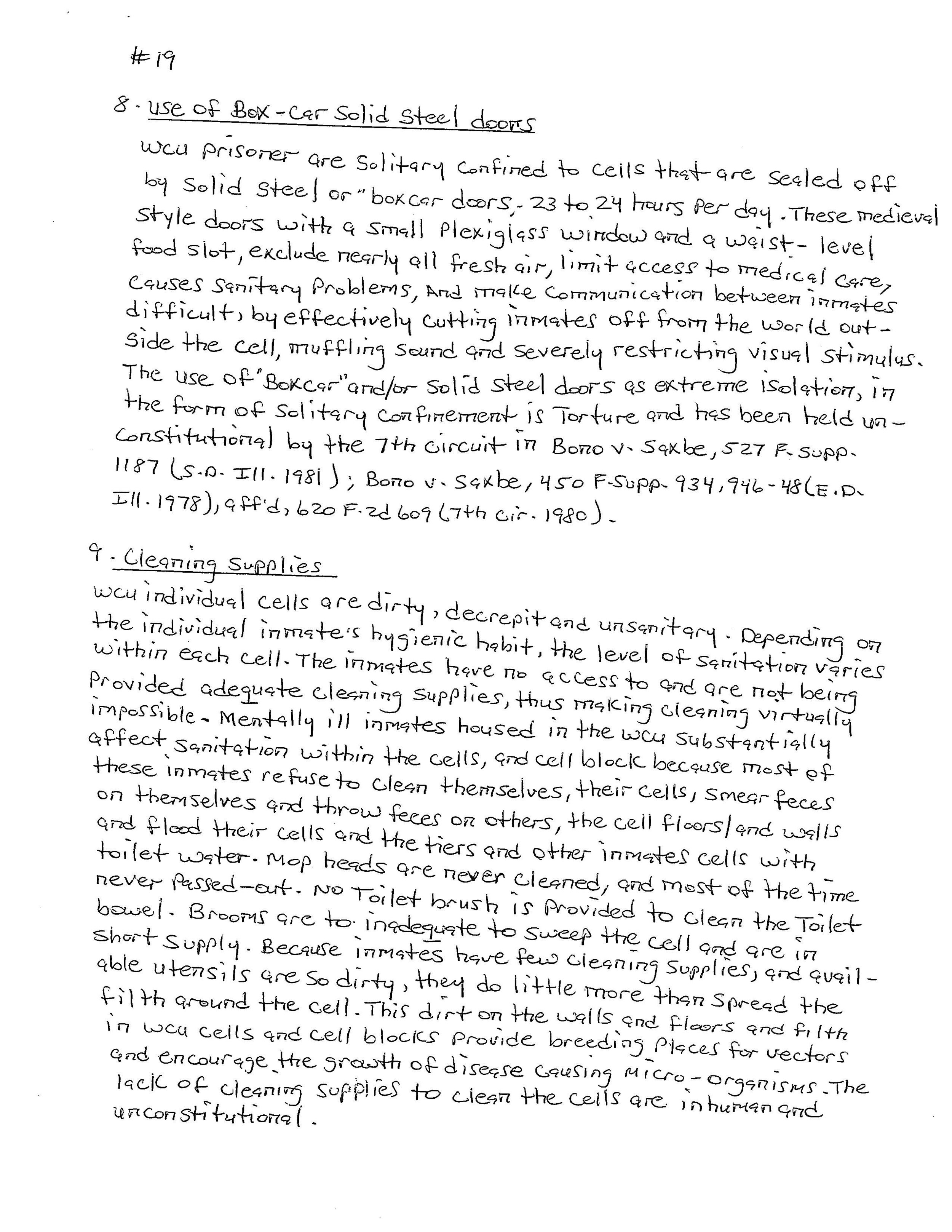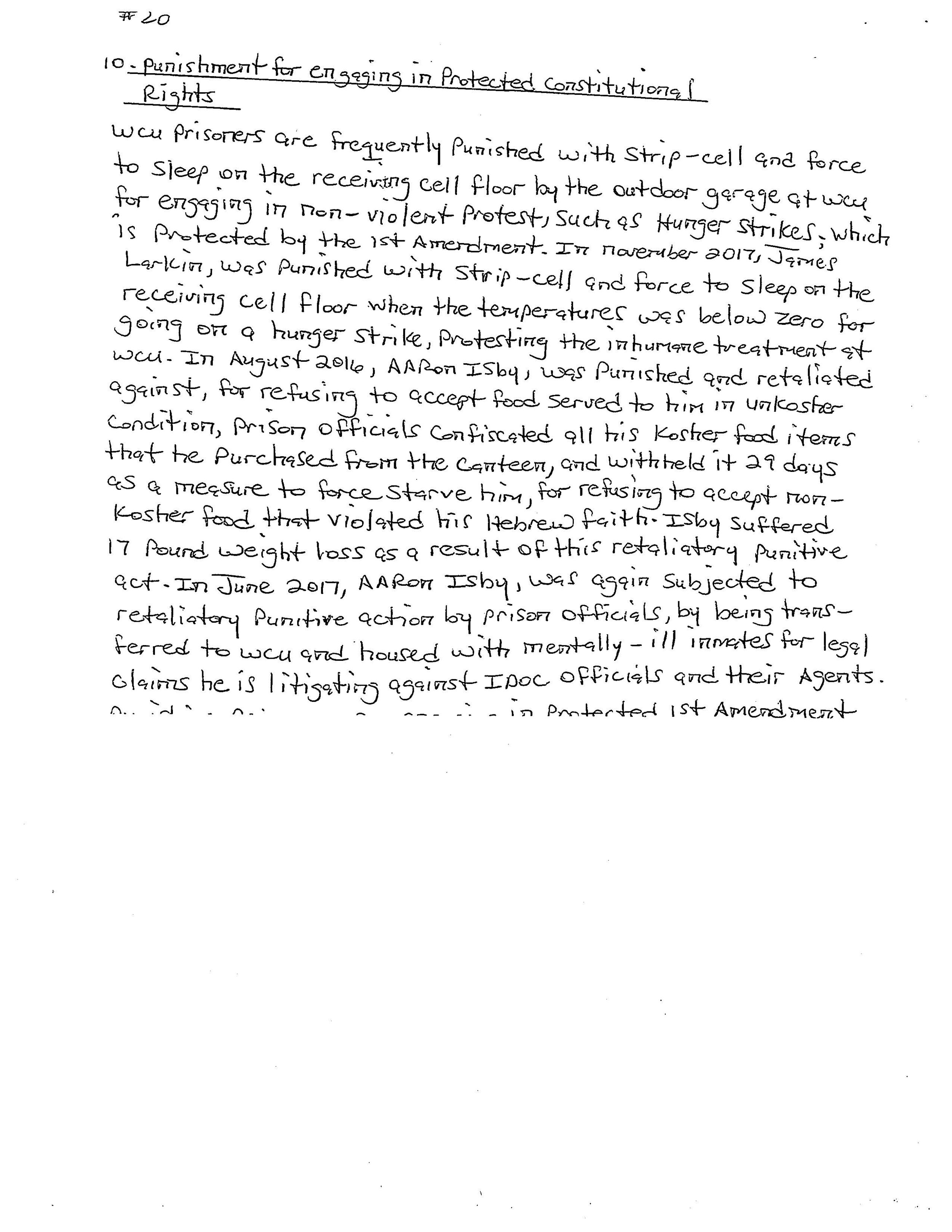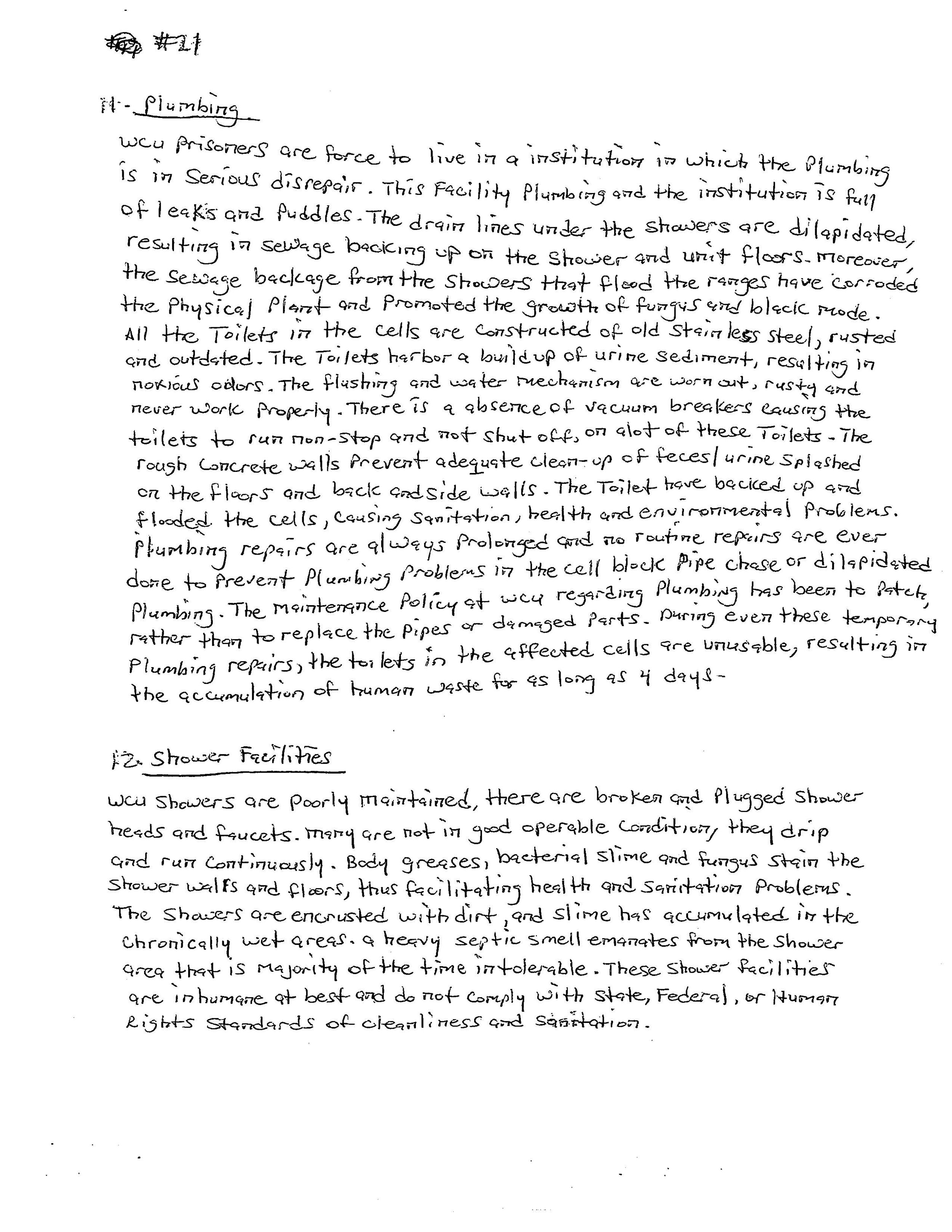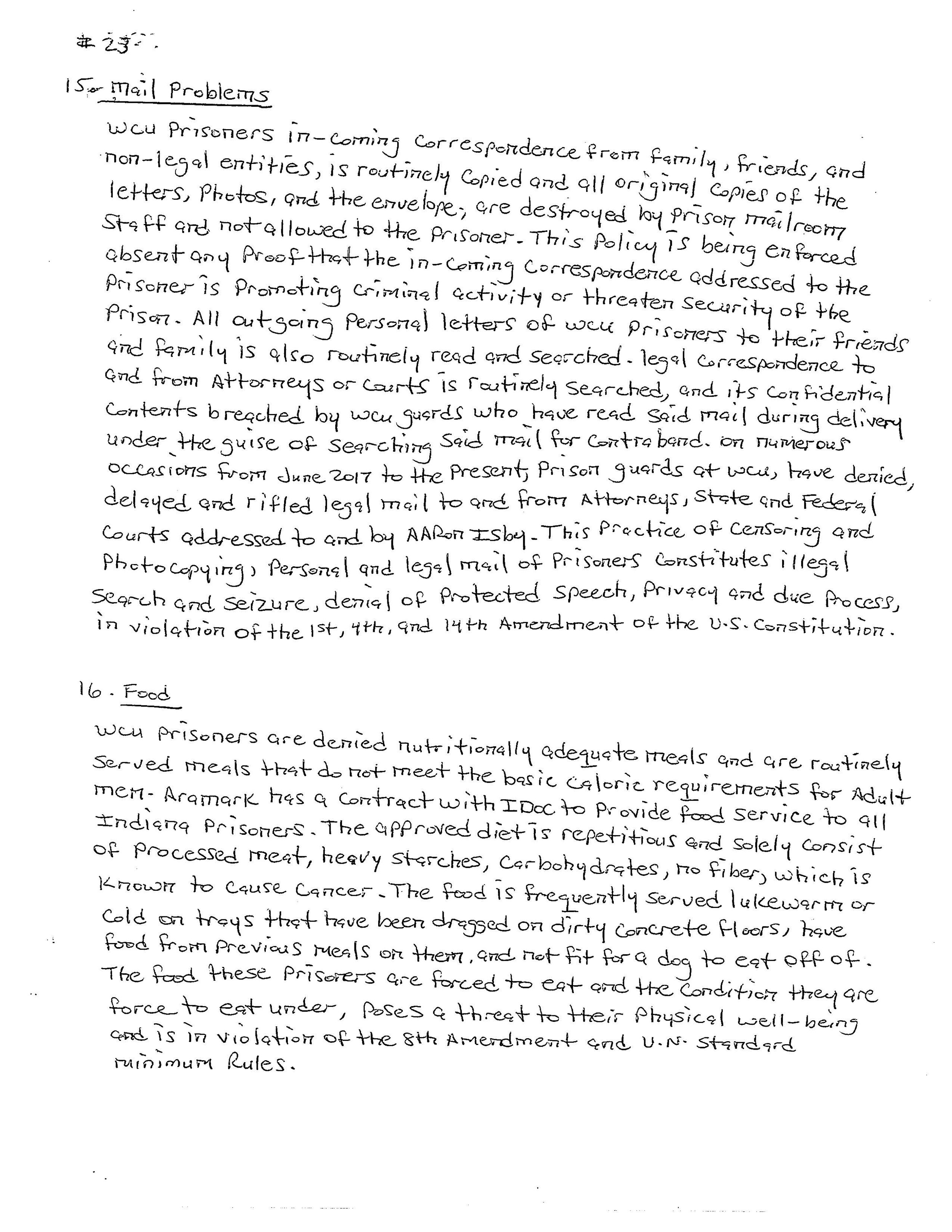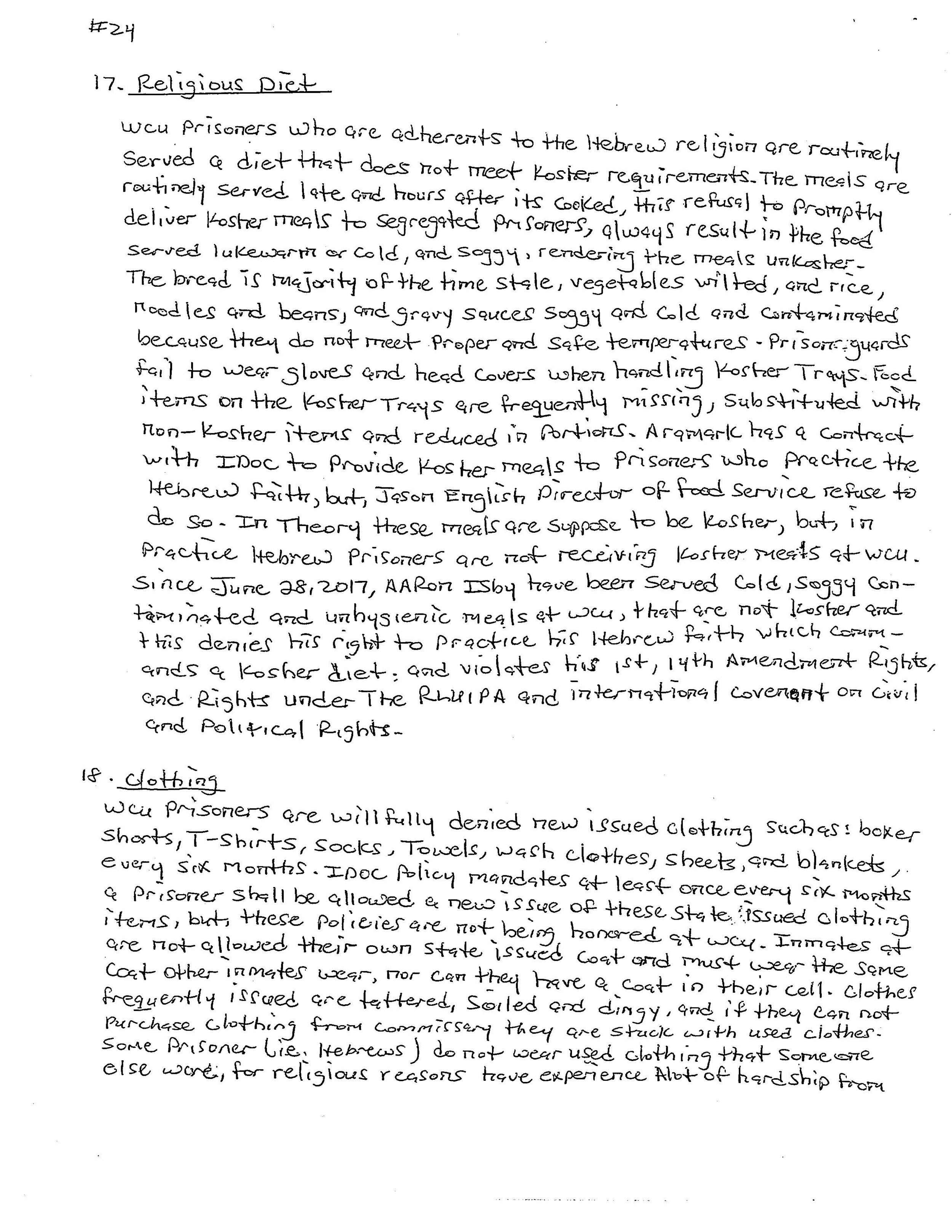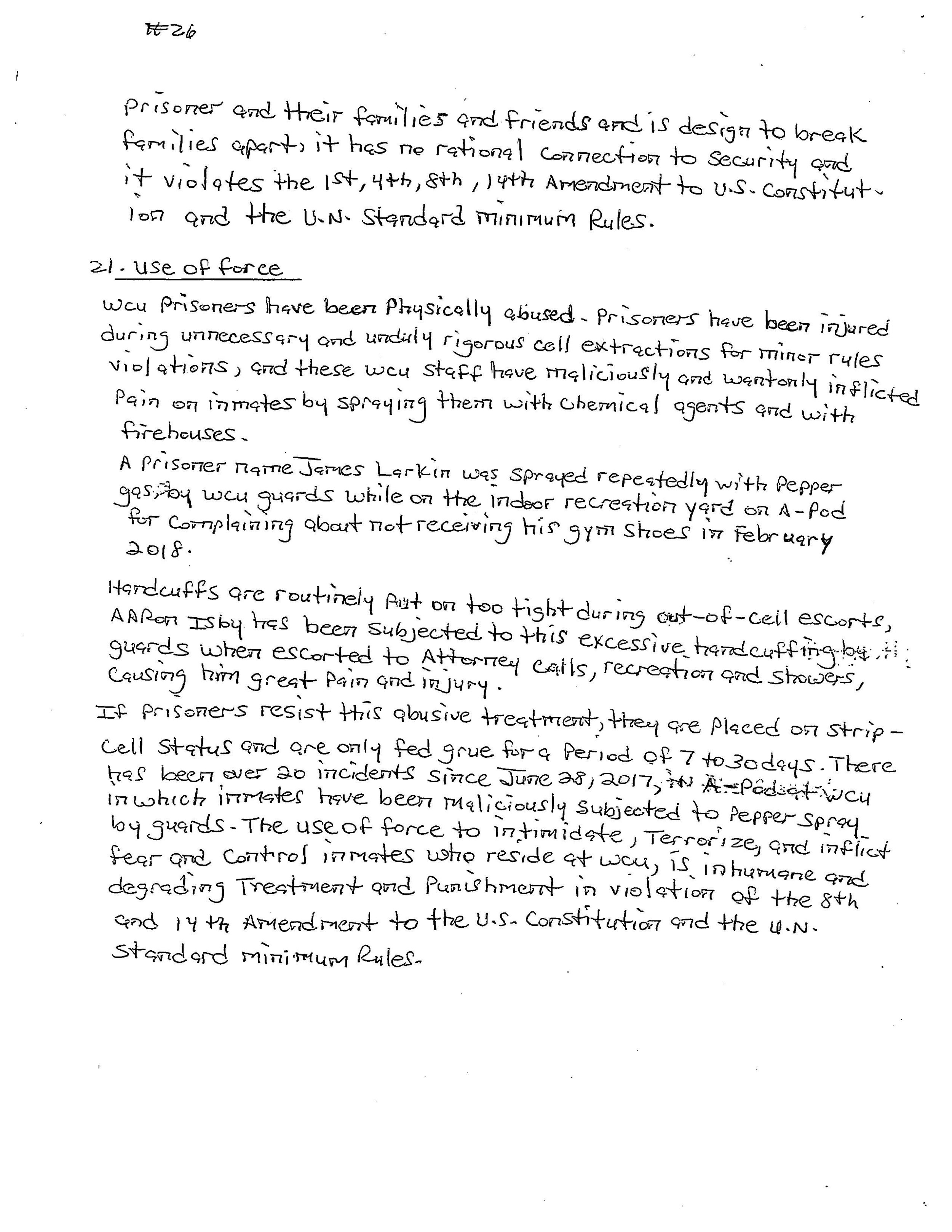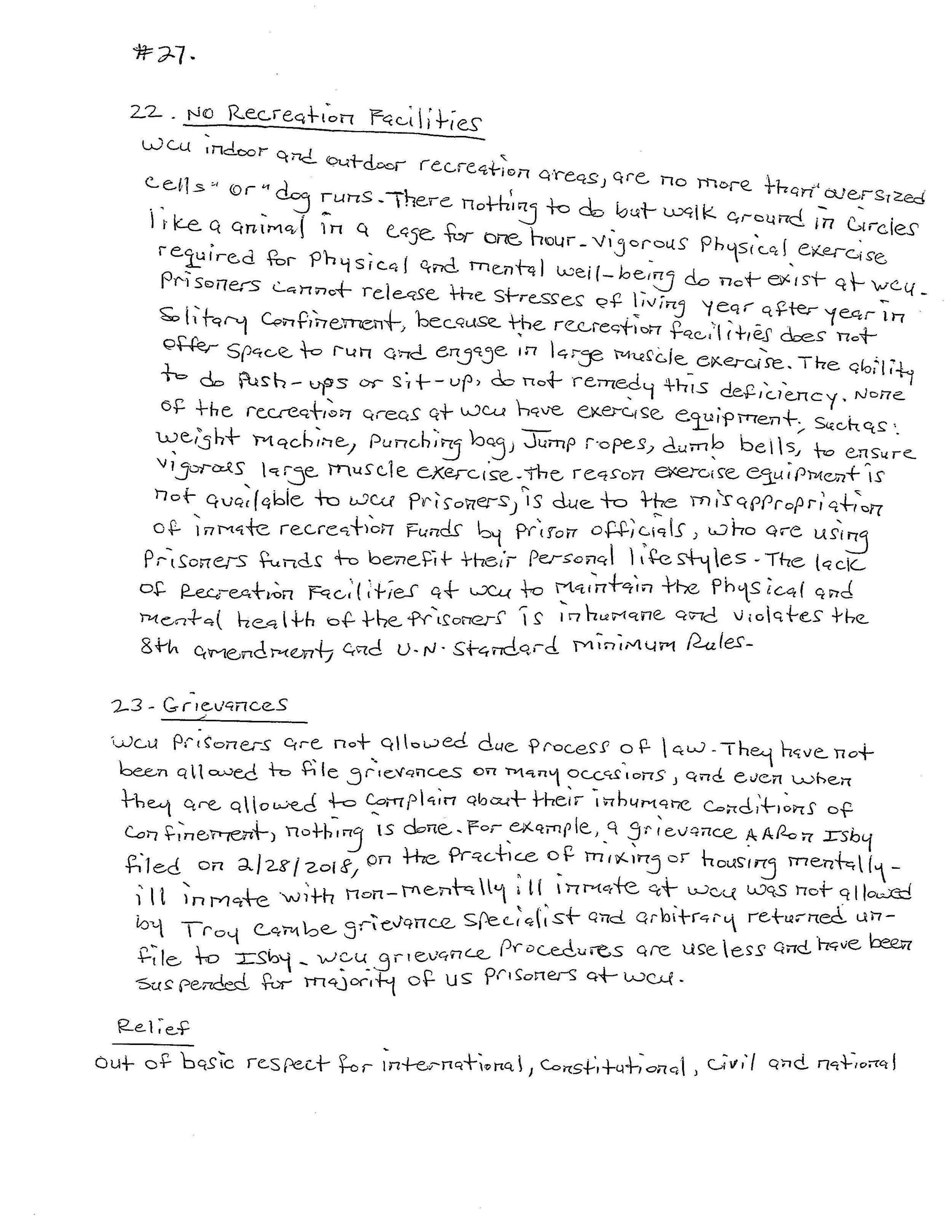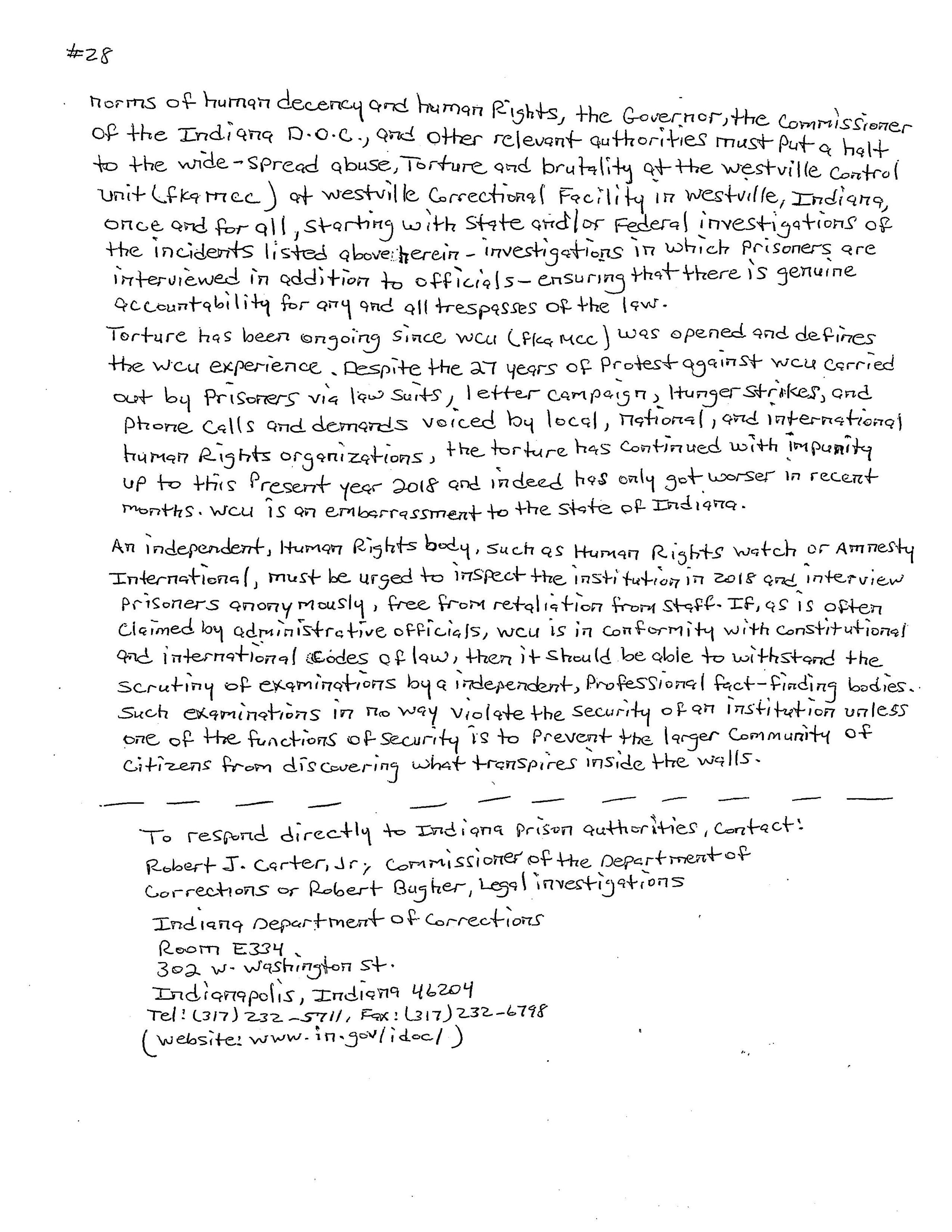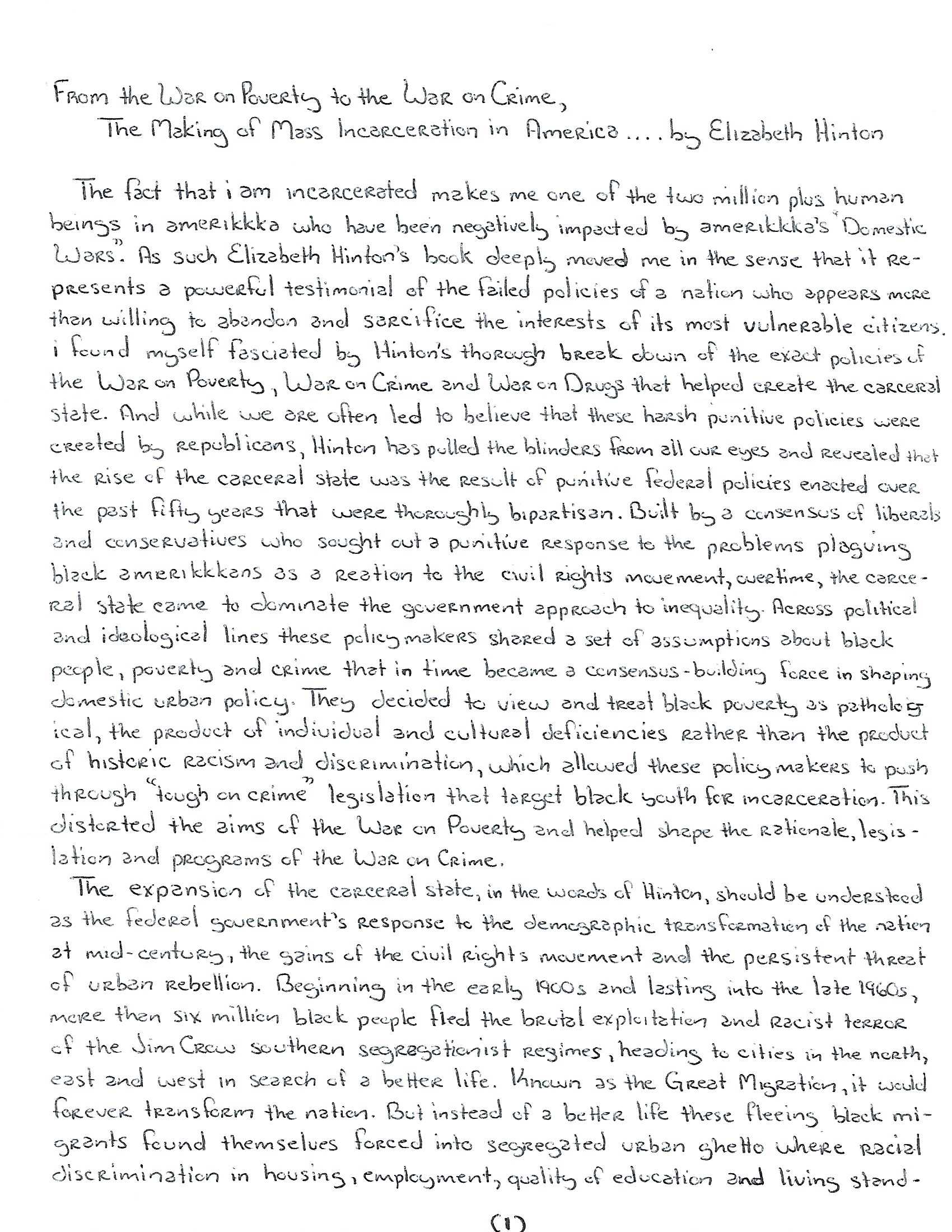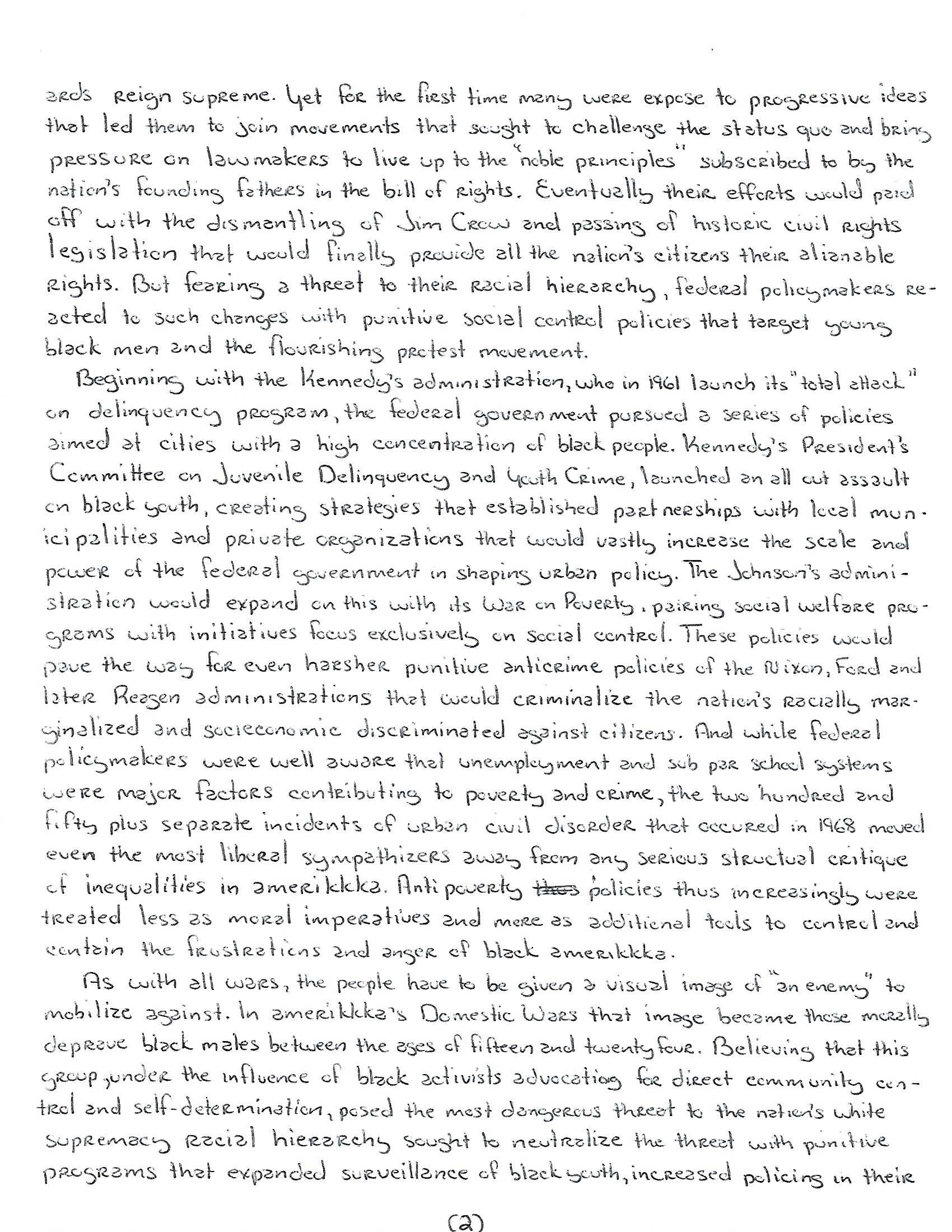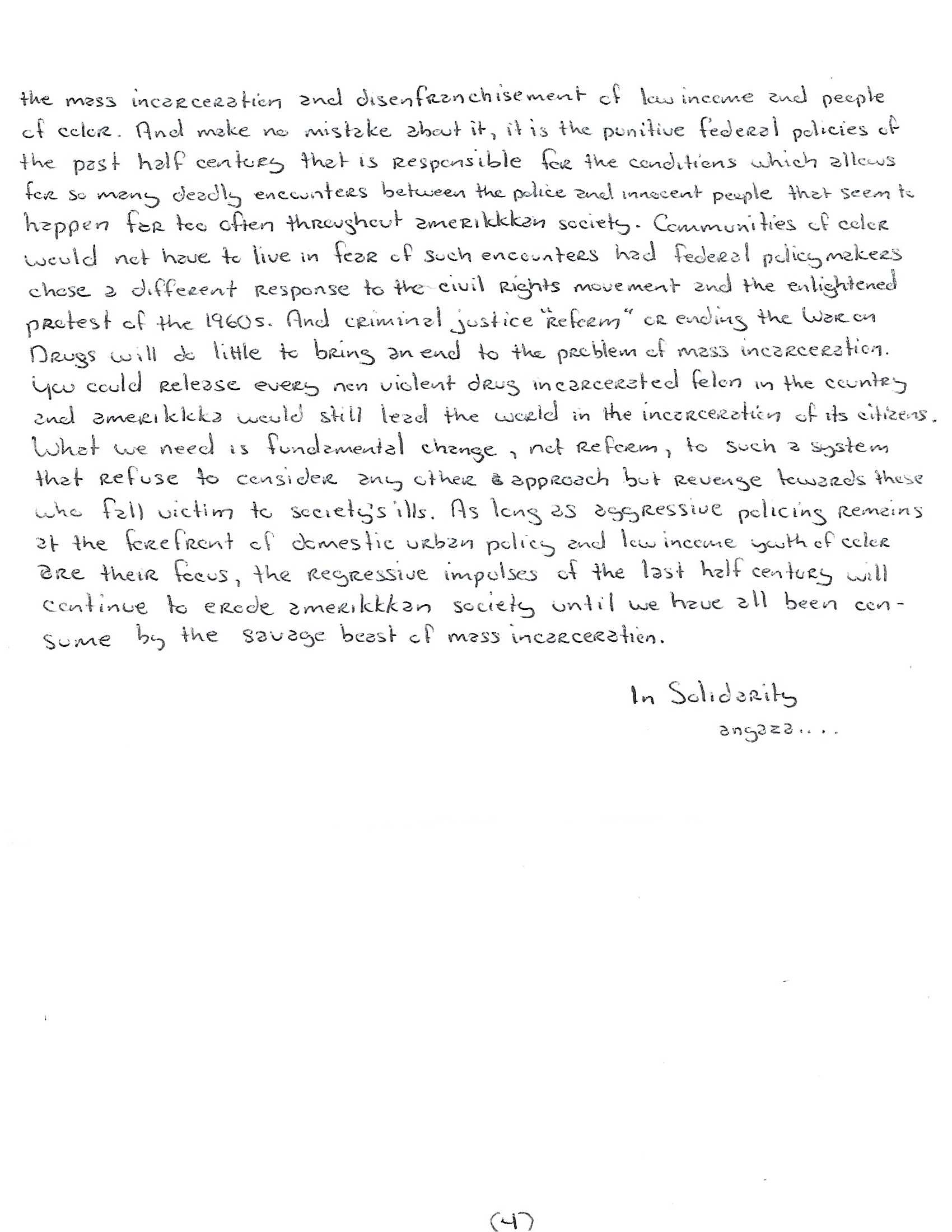Anastazia Schmid
Note: This is an edited compilation of several letters written to IDOC Watch by Anastazia Schmid in response to Are Prisons Obsolete?, published with her permission.
Thank you so much for sending these amazing books! I have just finished reading Angela Davis' Are Prisons Obsolete? It will take me several letters to respond to all the thoughts this book invoked in me. You are welcome to share my commentary for open dialogue on these very crucial topics and conversations.
My pervading response to this book is unfortunately one of despair. The reason being is prompted by the grim reality of its publication date, and subsequently, the publication dates of all the references that preceded this work. It weighs upon me to KNOW HOW long we have been aware of these interconnected hegemonic power structures that have so grossly, and vastly oppressed so many (now globally as well as nationally) and yet all of these issues and problems have only GROWN to epic proportions rather than being ameliorated or abolished in some way.
It is in this space of awareness that I ask myself, and challenge others to also ask: How and where have these hegemonic ideologies (racism, sexism, xenophobia, etc) been created? What sources solidify the perpetuation of these fallacious human hierarchal beliefs? And therefore, how can we come together to dismantle the things that reinforce those beliefs which then solidify the power structions that grossly harm and oppress their targeted populations?
I have now been imprisoned for 17 years, years that proceed the research and writing of this important book. Herein lies part of what is so distressing, Why is it that more people are NOT aware of the contents/ context of this book FIFTEEN YEARS later?!? To the extent that NOTHING has changed within these systems, only progressively worsened, and only to grow to astronomical proportions? How do we collectively come together to bring mass AWARENESS? To open this dialog to others who would never bother to so much as pick up a book of this type? This is where I open my discussion and commentary.
I ask all the aforementioned questions to engage an even deeper thought process as to the ways and means incarcerated and formerly incarcerated people (I/FIP) have been vilified and dehumanized... in other words, turned into "criminals, convicts, inmates, offenders, felons, prisoners," etc etc etc. These tropes create what I refer to as a "convict race" (a term I reappropriate and expand from Dr. Micol Siegel's, to encompass ALL people, male and female of all races, creeds, etc) who are encompassed in the carceral state, and how this trope instills and solidifies the power structures that oppress and harm those ensnared within it, indefinitely.
Simply being released from prison does not magically restore these people's humanity. If anything, the formerly incarcerated are even further demonized by a non-welcoming external society. Even those who claim they wish to help and "believe in second chances," expect that help or second chance to come through in ways that do not directly involve the people (or the communities) that claim they believe in such things. For example, the number of incarcerated people that gain a higher education while in prison (that is, those of us who have been fortunate enough to do so in states that still provided such programs, during a time they were available), who are then effectively barred from graduate education once we are released from prison, sometimes by the very same institutions that provide our undergraduate educations while were we inside!!! Or the "liberal" communities that fight for housing opportunities for low socioeconomic status people, but will not equally fight for or allow formerly incarcerated people to obtain housing and housing assistance in those very same communities or through the assistance of those said agencies. That attitude of "yeah, we believe they should have a second chance....but not in OUR neighborhood, schools, company, etc."
I say all of this to pose the question of, how do we overcome such deep seeded discriminatory beliefs about people who have become ensnared within a system that has effectively made us less than human, or non-human? Not worthy of the same rights, benefits, or treatment as others, inherently "different," "flawed," ""inferior," etc. How do we make I/FIP just that, PEOPLE? We have to become people worthy of all the accoutrements of life, liberty and the proverbial pursuit of happiness before we can hope to dismantle these deeply ingrained systems of power and control. In these arguments we must understand that such things as "democracy, " justice," and "equality" never existed to begin with for anyone outside of white affluent males (we could certainly add conservative, right wing, Christian, heterosexual on top of that demographic to gain an even clearer perception of exactly WHO and WHAT the "law" applies to. More on that later).
We must examine how we view people: worthy vs. unworthy, deserving vs. undeserving, and how we define, label and categorize people, and how by doing so we effectively remove and exclude specific people or groups from actually being seen as or treated as people. Anytime I/FIP are referred to or viewed as anything other than people, or in a context that tags their crime (or details of their crime) to their words, image, work, testimony, etc. a conscious or subconscious trope is solidified that can and does, harm, oppress, or creates fertile ground for discrimination against that person, often permanently.
We need to look at how and why a life sentence IS the death penalty, really, how ANY prison sentence or felony conviction is a death sentence in that it is a civil and or social death. A person is no longer a person, no longer a viable human being. They are no longer treated as human, but then again, most of those people were never seen as human or equal to begin with. Especially people of color and women. When we speak of "lawbreakers," such discussions are clearly ONLY referring to those who have "been caught" or those who were "convicted." I have yet to encounter a human being who hasn't broken the law in some fashion or regard, yet how easy it has become for any person who hasn't been arrested or convicted in a court of law to assume a righteous position that they themselves are somehow not criminals, not lawbreakers.
The are multiple ways humanity creates dichotomies of "us vs. them." Paradigms and paradoxes that exclude or include certain people or groups thereby creating these hierarchies of existence. These are the things we must address individually and collectively. When, where, why and how do we create these divisions and separations of humanity. Who is excluded? Who is included? Who counts as human, citizen, deserving, worthy? One person cannot have "freedom" or "rights" under any of the current systems without creating "unfreedom" and "no rights" to another, or for one group over another. We have to address these things first.
So where are the tropes of the "convict race" created? Most noticeably, the media. Pay attention to the news in particular. Newspapers, tv and online source news broadcasts, mainstream magazines, etc. Look at the words and images that are used whenever I/FIP are featured or referred to in basically any context. I have been at the forefront, along with several of my colleagues, in bringing awareness to and opposing the epistemic injustice/ violence that occurs when media sources tag crime/ convictions and/or sensationalize the aforementioned to I/FIP within media sources. Damning a human being eternally by reiterating crimes and conviction ANY time that person is featured or referred to, particularly AFTER a person's sentence is complete, perpetuates social and civil death, stereotyping and discrimination, sets up person up for attack on every level, effectively continues to lock them out of opportunities, particularly those of basic need: i.e. housing, employment, govt. assistance, education, etc. The most recent devastation and striking examples of this can be seen in recent articles produced by the New York Times and Indianapolis Star in regard to one of my best friends, and colleagues, Michelle Jones, who was released from prison this past August and is now attending NYU's American Studies PhD program. I purposely chose not to provide extensive commentary on this particular example as A) I feel through pointing out the exact details of what they have done further solidifies exactly what that type of commentary and depiction aims to do, and B) I encourage readers to CRITICALLY examine articles about I/FIP for themselves to see if they are able to distinguish how and where language and imagery is used to distort and taint people's perception about I/FIP in ways that vilify and undermine them as human beings. Beyond the news, look to television programming, films, advertising, books, magazines and basically any other common everyday source of information or entertainment. I argue beyond Angela Davis' argument that such things do not just "normalize" the prison, making it omnipresent, but also it SOLIDIFIES our perceived NEED for the prison as well as defines WHO is supposed to be in prisons, and furthermore, solidifies the power structures that insist the purpose (on one hand) is "safety and security," deserving vs undeserving.
When crime/ conviction is tagged, that becomes the defining identity of said person. It effectively obliterates who the person was prior to the crime/conviction, who they are post, and any other normally defining characteristic of their personhood. If not complete obliteration, certainly a pervasive foreshadowing that cannot be removed. That person spends a lifetime being judged, persecuted and condemned for that action (or, in some cases, the failure to act), regardless of time, change, transformation, other defining characteristics or attributes. He or she must perpetually explain what happened and why ,even to complete strangers, they must continuously defend and attempt to affirm (or reaffirm) who they are as people, they must try to defend their past actions, or certainly continuously "display remorse and/ or guilt" for what has happened. It makes no difference who they were prior to the offense, or the circumstances and conditions under which it occurred, nor does it matter who they are and what they have done with their lives since, the crime/conviction becomes an indelible stain on their personhood. What Michelle Jones refers to as the "taint of criminality."
So therein lies the conundrum. How do we overcome the taint of criminality and the creation of the convict race to allow the average everyday citizen, those who are NOT members of the more liberal branches of the ivory tower or already a part of alternative and radical groups of thinkers and activists, to become interested and invested in the lives of I/FIP? On the remote chance people do become aware of so many of the issues Angela Davis and others bring to the forefront with books such as these, how do you get those people to care or to see a need and harbor a desire for change when their perceptions are clouded and infiltrated to such core depths by these indefinitely vilifying portrayals and identity markers? How do you even begin to spark interest in these scholarly works or activist movements when the subjects at hand are not seen as subject but mere undeserving objects by the vast majority of dominant society? Some of the work we engage in seeks to challenge and change that dominant narrative, and the pervasive questions of who is a criminal? what is a crime? And furthermore, WHEN does a charge and sentence fully end for those who have been given such labels?
Anytime I encounter these stories or depictions in some form of "news" coverage, I am left feeling outraged and depleted. Yesterday the local news covered a story of a woman's recent release, Lori Tackett. With all the theatrics of a Hollywood horror story, the commentary recapped the grizzly details of the nearly 25 year old crime, including the mention of two co-defendants who were released over a decade, and nearly two decades ago respectively. What I noticed beyond the aforementioned was the failure to discuss the fact that the 2 previously released women in this conviction have lived perfectly law abiding lives ever since, or any mention of details from the past 24 years of Lori's life while incarcerated (save for her appearance on the Dr. Phil show and a letter and poem she had once written, the latter may or may not have pertained to anything related to the crime or conviction). How is this woman, or any other in similar circumstance, ever to be expected to successfully reintegrate into society where there has clearly been an effort to thwart their return by re-criminalizing and vilifying them AFTER their sentence has been served? This is precisely what I mean when I say that ALL prison sentences ARE death sentences.
From that note, I move on to discuss the innumerable incarcerated people who (possibly NOT sentenced to such) do indeed die, unnecessarily, while incarcerated. Be it due to deliberate indifference, internal acts of violence, or medical negligence (the first and last even more so prevalent in this day and age of privatized healthcare in prisons). Over the years I have held an eyewitness account of these occurrences more than once, with little to no recourse for the victims and survivors of those incidents. It is as though several of those incidents, nor the women themselves, ever happened, or existed. The outside world more often than not remains oblivious, and when these happenings are made public, there is a deliberate social indifference, or the incident is briefly spoken of, then disappears before anything comes of it or any real change is made. Who cares what happens to a prisoner?
Such media portrayals are infused with fear and loathing tactics, further publicly shaming people post incarceration. Nothing positive or productive is achieved through this type of media representation. The saddest reality is that these news sources can and will run these articles with or without the person's consent (or even against their expressed consent NOT to have their image, words, work, etc. used). It is as if once a person has a conviction it is fair game for anyone to print, say, project or portray anything about them however they see fit with complete disregard to the person themselves or how this may negatively affect their life and potentially create infinite forms of harm to them on multiple levels. I/FIP are nearly always depicted in very specific stereotyped ways (as are prisons and jails), that solidify the power structures that oppress, harm and marginalize. It is further imperative to bring awareness to the fact that those power structures are intimately interconnected in order to prevent anything that defies those dominant narratives and fallaciously created tropes. Politicians, legislators, capitalist corporations with a vested interest in profits from punishment, lobbyist, major mainstream media sources, universities, government agencies, the medical professions, etc., even spiritual leaders, are interconnected to maintain the entire infrastructure of the prison-industrial complex and the carceral state. Such has been the case throughout American history, only perhaps more insidiously in modern times.
You can read more of Anastazia Schmid’s work on gender, incarceration and epistemic violence on the Abolition Journal and Where the River Frowns blogs, or listen to podcasts and radio interviews with her at the Prindle Institute and Kiteline Radio.


